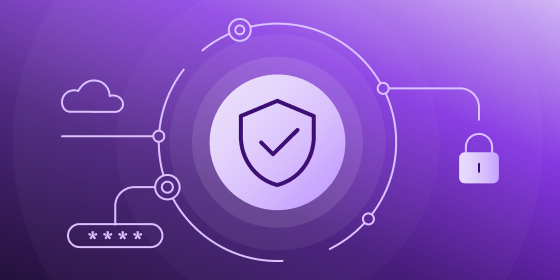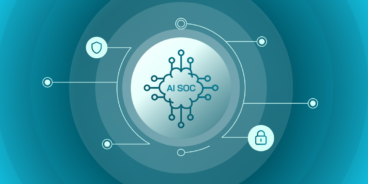
Security operations works as a centralized coordination unit based on the security principle of people, processes, and technology to manage cybersecurity threats and incidents. Using actionable intelligence, security teams are able to analyze complex and emerging threats and respond by developing quick and efficient solutions. Security operations detect emerging or ongoing cyber threats, which provides valuable analysis that are then used to strengthen security against future attacks.
What Is a Security Operations Center (SOC)?
The heart of security operations is the security operations center, which is commonly referred to as the SOC. It is a group of security professionals, who work to identify and respond to cybersecurity incidents swiftly and efficiently in real time. Sometimes people use the term SOC to refer to the facility that houses the team. A SOC monitors a company’s assets, from on-premises servers to cloud resources. Broad monitoring capabilities are critical to the success of the SOC as they are responsible for monitoring the security of all servers, endpoints, perimeter devices like firewalls and switches, applications, and cloud infrastructure.
Since modern organizations’ technology systems run 24/7, SOCs usually function around the clock in shifts to ensure a rapid response to threats. The SOC must decide how they will be managed and acted upon for each event. Effective security operations put in place the people, processes, and tools necessary to interpret this data carefully so that they have actionable information. Part of this interpretation involves continually analyzing threat data to find ways to improve the organization’s security posture.
Security Operations Responsibilities
Security operations, commonly referred to as SecOps, are the measures taken to protect the company’s information from cyber attacks. By combining internal information security and IT operations practices, security operations can help organizations collaborate effectively and reduce risks. Here are some of the responsibilities that security operations manage:
- Assessing security measures and potential security vulnerabilities
- Developing and implementing security policies and procedures
- Updating and upgrading security controls and technologies
- Ensuring compliance with security regulations and standards
- Addressing and remediating security threats within the organization
Four-Step Security Operations Process: Triage, Investigation, Containment, and Response
The SOC handles many responsibilities. One of the main tasks of the SOC is evaluating and responding to security incidents. This is conducted through a process of triage, investigation, containment and response. The goal of this process is to find and fix security issues before they develop into breaches. These steps are elaborated in what are called playbooks, detailed in knowledge bases, and sometimes automated using security automation orchestration and response (SOAR) tools. The idea is to create a repeatable process that focuses the team on the most critical issues and responds to them appropriately.
1. Triage
First, security operations teams triage incident alerts in order to assess whether a particular security alert represents a genuine threat or not, as well as the level of threat. Evaluating the validity of an alert is critical for effective security operations, as not all alerts turn out to be malicious. The goal of this phase is to focus work on true threats, and disqualify false positives as benign. If the triage reports that there is a true threat, an investigation is conducted.
2. Investigate
During the investigation stage, the security operations analysts investigate the malicious activity to determine the nature of a threat and the extent to which it has penetrated the environment. The security analysts must reconstruct the entire scope of an attack and as such it can be helpful to view the organization’s network and operations from an attacker’s perspective, looking for key indicators or attack (IoA) and indicators of compromise (IoCs) The security operations analyst may combine information about the organization’s network and systems with external data sources like threat intelligence, including specifics on attacker tools, techniques, and trends to perform an effective triage.
The investigation phase is key to effective security operations as missing part of the attack means that your containment and response will not address it. Effective investigation is both time intensive and requires a lot of expertise to be conducted properly.
3. Contain
During a security incident, acting quickly to minimize the damage is essential. The goal of containment is to isolate the affected computer or system and prevent the problem from spreading to other parts of the organization, limiting the incident’s impact and preventing it from causing further issues within the environment. A common example is preventing a known phishing email from being sent to additional email accounts in the organization. By doing this, security operations can effectively manage the incident and work towards resolving it as quickly and efficiently as possible.
4. Respond
In the aftermath of an incident, the SOC works to restore systems and recover any lost or compromised data. This process may include wiping and restarting endpoints, reconfiguring systems, or in the case of ransomware attacks, restoring data from backups to regain access to data. When successful, this step will return the system to its state before the incident.
Security Operations Tools
Security operations can be carried out in-house by a team of skilled security professionals or by outsourcing to a third party. SOC teams are responsible for safeguarding the organization against cyber threats. They use specialized tools to gather important information from event logs across the system, review and interpret security alerts, and then use that information to coordinate their efforts and take action.
Some commonly tools used in today’s SOCs include:
- Security information and event management (SIEM): Monitors security-related events and provides real-time analysis to detect security threats.
- Network detection and response (NDR): Identifies threats and attacks that occur in the network and takes actions to stop or mitigate them.
- Endpoint detection and response (EDR): Responsible for detecting, investigating, and mitigating security incidents that occur on endpoints.
- User and entity behavior analytics (UEBA): Analyzes user and entity behavior to detect anomalies and potential security threats.
- Extended detection and response (XDR): Provides centralized threat detection and response across multiple security products and data sources.
- Security orchestration, automation, and response (SOAR): Automates security operations and orchestrates responses to security incidents to reduce response times and minimize the impact of incidents.
Security Operations Challenges
The biggest problem for security operations teams today is human resources. SOCs are often run by Security Analysts who are responsible for the decision making process, assisted by tools that can help reduce workload. While human decision making has been key to quality cybersecurity, experience in both security analysis and in the specific system is hard to acquire. Compounded by the already depleting amount of available security analysts today, the use of SOAR which can reduce workload, is not always a reliable solution.
Since the threat and vendor landscape constantly evolves, security analysts utilize playbooks. However, playbooks need to be updated frequently in order to be effective tools which creates additional workload for the already exacerbated security team. In many cases, organizations may need dedicated automation engineers to accomplish these tasks on a full-time basis. Replacing a team of security analysts with a team of automation engineers significantly reduces the ROI attained with automation.
Learn more about human versus automated security operations here.
AI Security Operations Eliminates Challenges
By leveraging machine learning and AI to perform security operations, security teams can significantly increase their capacity while simultaneously reducing their costs. Software that combines machine learning and deep security expertise can effectively tackle the time-consuming and repetitive tasks of alert triage, investigation, containment, and remediation, in an infinitely scalable way. An autonomous, software-based approach to security operations also ensures that 100% of alerts are addressed consistently at the quality of a top-tier analyst familiar with the given environment.
An autonomous, AI-driven security operations solution can perform a dynamic question-and-answer process, similar to human analysts for triage and investigation. Rather than performing the same static steps regardless of the threat, the system examines the available information and decides the best question to ask to advance the investigation. The system then retrieves an answer from its knowledge store or external industry-leading intelligence feeds and then reexamines the new information to select the next most crucial question. This process continues until each alert is determined to be benign or malicious, and all malicious incidents are investigated to determine the full extent of affected entities and establish the root cause.
The benefit of this approach is that you get the triage and investigation quality of your best analyst with the scale, consistency and 24/7 availability of automated software.
Want to learn more?
Visit us at radiantsecurity.ai to see a demo or learn how autonomous security operations can transform your SecOps program.





